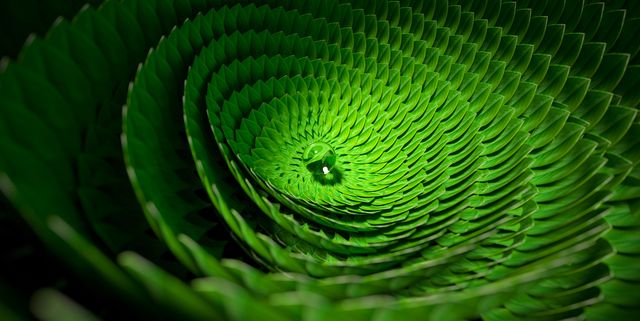Researchers have recently made significant strides in understanding the geometrical blueprints that nature often employs, revealing a new class of natural formations known as “soft cells.” These elements, characterized by their curved edges and lack of traditional angular shapes, illustrate a dramatic shift from conventional mathematical tiling, showing capabilities in both two and three dimensions. This discovery highlights a blend of nature’s efficiency and the elegant complexity of mathematical geometry.
A collective of mathematicians from the Budapest University of Technology has pushed the boundaries of traditional geometry by bringing theoretical shapes into practical observation. Their study, initially published on the preprint server arXiv, introduces these “soft cells” or “z-cells,” which can tessellate seamlessly without the sharp edges and points typically seen in mathematical tiling. This adaptation allows for continuous coverage in a variety of natural and synthetic applications, bridging the gap between the abstract and the tangible.
Their findings challenge the longstanding mathematical paradigms of tiling, which predominantly featured polygons and polyhedra with distinct corners and edges. The researchers propose that the natural world often favors softer, more organic tiling methods that employ curved edges and minimal corners, suggesting a more fluid and adaptable approach to covering space. These insights not only redefine our understanding of geometric principles but also enhance our appreciation for the underlying structures that compose the natural world around us.
Additional Beneficial Information for the Reader:
This breakthrough in recognizing soft cell shapes offers profound implications for various scientific and engineering disciplines. By understanding how these shapes naturally occur and function in the natural world, researchers and designers can develop more efficient, durable, and aesthetically pleasing materials and structures. This could lead to advancements in architecture, where buildings incorporate natural flow and reduced sharpness to enhance aesthetic appeal and structural integrity.
Moreover, the application of these geometric findings extends to biological sciences and materials engineering, where the principles of natural tiling can lead to better synthetic tissues or more effective packing materials. By mimicking the natural efficiency of soft cells, we can create products that are not only more functional but also more harmonious with the environment. This fusion of nature’s designs with human ingenuity could pave the way for innovations that are sustainable, cost-effective, and broadly beneficial to society.
